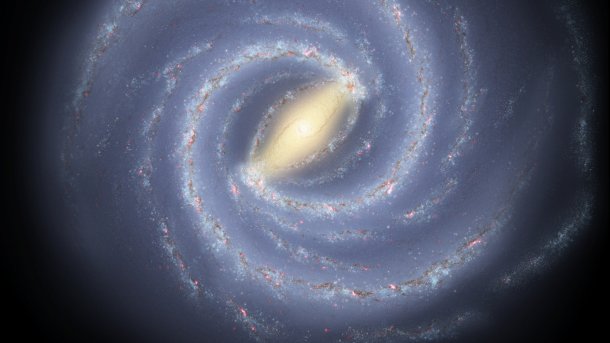New dwarf galaxies discovered: Dark matter mystery takes a surprising turn
e existence of satellite galaxies in the Milky Way is closely linked to the topic of dark matter. Now there are two discoveries providing new food for thought.

The Milky Way
(Image: NASA/JPL-Caltech)
The discovery of two new dwarf galaxies at the edge of the Milky Way could help us to better understand dark matter. This is considered practically invisible, but is thought to make up around 85 percent of the matter in the universe.
An international team of researchers used data from the Hyper Suprime-Cam (HSC) Subaru Strategic Program (SSP) for their study and published the results at the Astronomical Society of Japan.
For a long time, scientists were preoccupied with the so-called "missing satellite problem": The Milky Way appeared to have significantly fewer companion galaxies than predicted by the standard dark matter model. This assumed around 220 satellite galaxies. The newly discovered dwarf galaxies Virgo III and Sextans II could now contribute to solving this puzzle.
First too few, now too many small galaxies?
"The question of how many satellite galaxies the Milky Way has has occupied astronomers for decades," explains Masashi Chiba, professor at Tohoku University. The team suspected that there could be many undiscovered, small and difficult-to-observe dwarf galaxies. The powerful Subaru telescope in Hawaii proved to be ideal for this search.
The new discoveries bring the total number of satellite galaxies found by various research teams to nine. This is still far below the 220 companions predicted by the standard theory of dark matter. However, the HSC-SSP does not cover the entire Milky Way. The team's projections suggest that there could actually be up to 500 satellite galaxies - which would turn the "problem of missing satellites" into a "problem of too many satellites".
Telescope with a larger field of view needed
In order to determine the actual number of companion galaxies more precisely, further high-resolution observations are required. "The next step is to use a more powerful telescope with a larger field of view," says Chiba. "Next year, the Vera C. Rubin Observatory in Chile will be used for this purpose. I hope that this will lead to the discovery of many new satellite galaxies."
(mki)